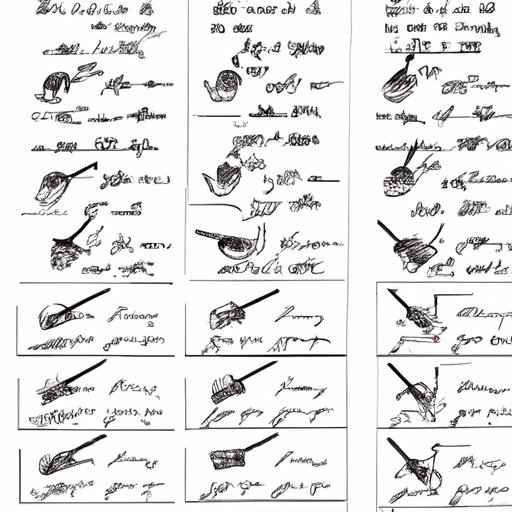
Introduction
Handwriting is a crucial part of communication. Not only does it convey a message, but it also reflects the writer’s personality and style. Good handwriting can make a great impression on readers, while poor handwriting can create confusion and make the intended message hard to decipher.
Factors that affect handwriting quality include one’s writing speed, the grip on the pen or pencil, the angle at which the writing instrument is held, and consistency in letter formation. Good handwriting is not just about pretty penmanship, it’s also about legibility and ease of reading.
Practice Regularly
Like any other skill, improvement in handwriting quality requires consistent and diligent practice. Set aside a few minutes each day to practice your handwriting. Even just ten minutes a day will make a huge difference in improving your handwriting.
You can practice your handwriting anywhere and anytime. You can use a notepad, a whiteboard, or even your phone screen. Establishing a regular practice routine will help you form good habits. It’s important to make it fun and enjoyable, so you don’t lose motivation.
The benefits of practicing regularly are undeniable. You’ll become more comfortable with your writing, making it easier to read and more legible. It also helps improve your muscle memory, so you can write with greater ease and flow.
Focus on Letter Formation
The fundamental aspect of good handwriting is proper letter formation. The correct shape, size, and spacing of letters all contribute to legibility and ease of reading.
To improve your letter formation, start with individual letters. Practice each letter slowly and deliberately, making sure to use the correct size and shape. Once you’re comfortable with individual letters, try forming simple and then more complex words. You can find handwriting worksheets online to help you practice.
Pay Attention to Your Grip
The way you hold your pen or pencil has a significant impact on your handwriting quality. Experiment with different types of pen and pencil grips. Find one that works best for you. Some people prefer to hold their writing instrument between their fingers, while others prefer to hold it between their thumb and index finger.
Another tip is to hold your pen or pencil comfortably, with a relaxed grip. A tight grip can produce cramped handwriting, while a loose grip can result in slanted letters and inconsistent spacing.
Use Guided Worksheets
The benefits of using guided worksheets for handwriting practice are numerous. Guided worksheets provide structure and guidance, which makes it easier to focus on proper letter formation and spacing. They also provide a sense of accomplishment, as you progress through each worksheet.
Guided worksheets come in different forms, such as tracing letters, copying words, or completing a sentence. You can find free guided worksheets online, or you can make your own. It’s important to use worksheets that are appropriate for your skill level, so you don’t become frustrated or discouraged.
Try Different Writing Styles
Experimenting with different writing styles can help you find a style that suits your personality and enhances your communication. Different writing styles can make writing more fun and enjoyable, thus making it easier to practice regularly.
You can try different styles, such as cursive writing, block letters, or calligraphy. Learning a new writing style may feel overwhelming at first. It’s essential to start slowly, with basic exercises and build up to more complex letter forms.
Seek Professional Help
If you’re struggling with handwriting, seeking professional help may be a good option. A handwriting expert can analyze your writing style and give you personalized tips and techniques to improve your penmanship. They can also identify underlying issues that may impact your handwriting quality.
Working with a handwriting expert can be a fun and engaging experience. They can help you identify areas for improvement and give you personalized feedback and exercises to practice your writing skills.
Conclusion
Improving your handwriting is a process. It takes patience, consistency, and effort. But the rewards are worth it. Good handwriting not only helps convey a clear message but also reflects well on the writer’s personality. Try different techniques, experiment with different styles, and don’t be afraid to seek professional help. With hard work and the right mindset, you can improve your handwriting, one letter at a time.





